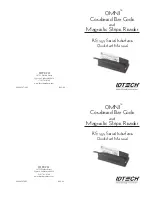
5
© SPX FLOW, Inc.
Form No. 1000665
Rev. 0 Sept. 9, 2019
•
Avoid off-center loads which could damage the hydraulic spreader and/or cause loss
of the load, possibly causing serious injury or death.
• Control the load at all times. Do not drop the load.
•
The user must be a qualified operator familiar with the correct operation,
maintenance, and use of the spreader. Lack of knowledge in any of these areas can
lead to personal injury.
• Wear safety glasses at all times.
• Read and understand all safety and warning decals and instructions.
•
Use only approved hydraulic fluid. Hoses, seals and all components used in a
system must be compatible with the hydraulic fluid used.
• Do not exceed the rated capacities of the spreader. Excess pressure can result in
personal injury.
• Inspect each spreader and coupler before each shift or usage to prevent unsafe
conditions from developing. Do not use cylinders if they are damaged, altered or in
poor condition. Never use extreme heat to disassemble a hydraulic spreader. Metal
fatigue and/or seal damage will result and can lead to unsafe operating conditions.
Safety Precautions continued
• Avoid pinch points or crush points that can be
created by the load or parts of the spreader.
• To help prevent material fatigue if the spreader
is to be used in a continuous application,
the load should not exceed 85% of the rated
capacity or stroke. Hydraulic spreaders should
not be continuously operated to the stops
without a load.
• A spreader must be on a stable base which
is able to support the load while pushing or
lifting.
• To help prevent personal injury, use shims, friction material or constraints to prevent
slippage of the base or load.
•
Do not set poorly-balanced or off-center loads on a spreader. The load can tip or the
spreader can "kick- out" and cause personal injury.
• If this component is used to lift, lower, or separate loads, be certain that the load is
under operator control at all times and that others are clear of the load. Do not drop
the load.
• As the load is lifted, use blocking or cribbing to guard against a falling load or a load
that will come together after being spread apart. All personnel must be clear of the
load before lowering.
LOAD
* = PINCH POINTS
*
*
*
WARNING






























